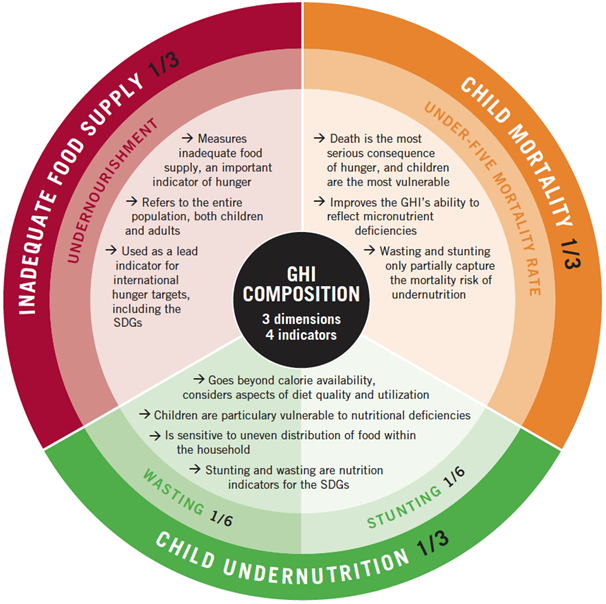Hunger issue, its Causes and India’s effort
The issue of Hunger
- Today, around 828 million people worldwide do not have enough to eat, and over 50 million people are facing severe hunger.
- The Hunger Hotspots Outlook (2022-23) — a report by the Food and Agriculture Organization` of the United Nations (FAO) and the World Food Programme (WFP) — forebodes escalating hunger, as over 205 million people across 45 countries will need emergency food assistance to survive.
- Globally, food and nutrition security continue to be undermined by the impacts of the COVID-19 pandemic, climate change, spiralling food inflation, conflict, and inequality.
- Nutrition and agricultural production are not only impacted by climate change but also linked to environmental sustainability.
- Soil degradation by the excessive use of chemicals, non-judicious water use leading to declining nutritional value of food products.
India’s Efforts
- India’s food safety nets collectively reach over a billion people. One of India’s greatest contributions to equity in food is its
- National Food Security Act (NFSA) 2013 which anchors the Targeted Public Distribution System (TPDS)
- PM POSHAN scheme
- Integrated Child Development Services (ICDS).
- The Government continues to take various measures to improve these programmes with digitization and measures such as rice fortification, better health, and sanitation.
- Food safety nets and inclusion are linked with public procurement and buffer stock policy — visible during the global food crisis (2008-12) and the COVID-19 pandemic fallout, whereby vulnerable and marginalised families in India continued to be buffered by the TPDS which became a lifeline.
- An IMF report titled ‘Pandemic, Poverty, and Inequality: Evidence from India’ asserted that ‘extreme poverty was maintained below 1% in 2020 due to the Pradhan Mantri Garib Kalyan Anna Yojana (PMGKAY).
Way Forward
- Recent climate shocks have raised concerns about India’s wheat and rice production over the next year. Therefore, it is important to place a greater focus on climate adaptation and resilience building.
- Agri-food systems will need to provide for and sustainably support an increasing population. There is increased recognition to move away from conventional input-intensive agriculture towards more inclusive, effective, and sustainable agri-food systems that would facilitate better production
| Global Hunger Index
● The GHI, is a peer-reviewed annual report that comprehensively measure and track hunger at the global, regional, and country levels ● Authors of the report primarily refer to the United Nations’ Sustainable Development Goal 2 (SDG 2) that endeavours to achieve ‘Zero Hunger’ by 2030. ● The GHI score is computed using four broad indicators — ○ Undernourishment (measure of the proportion of the population facing chronic deficiency of dietary energy intake) ○ Child stunting (low height for age) ○ Child wasting(low weight for height) ○ Child mortality(death of a child under the age of five) ● India ranked 107 among 121 countries. India was accorded a score of 29.1 out of 100 (with 0 representing no hunger), placing it behind Sri Lanka (66), Myanmar (71), Nepal (81) and Bangladesh (84). It referred to the index as an erroneous measure of hunger. |
| Practice Question
1. What is the Global Hunger Index? What are the steps taken by government to solve the issue? |




